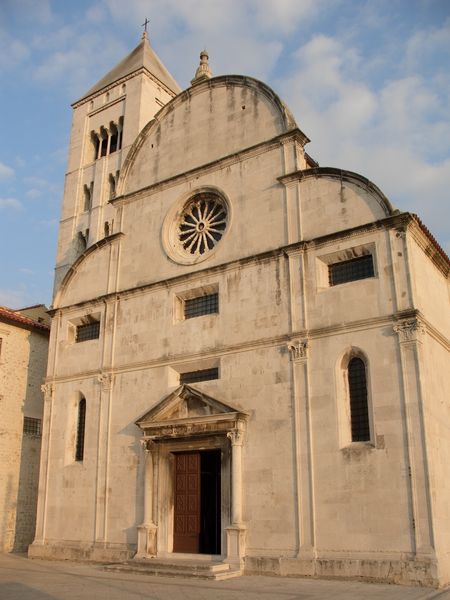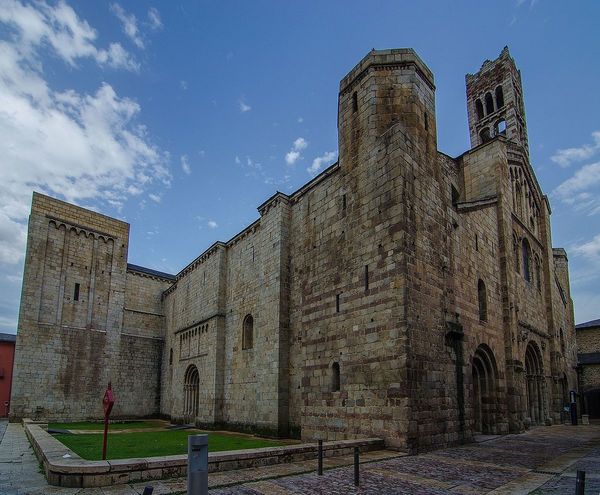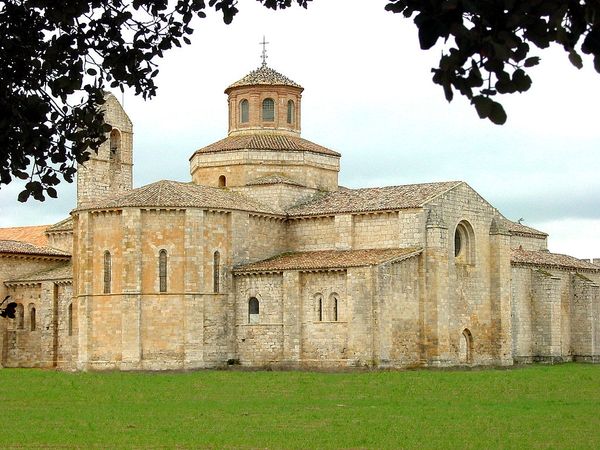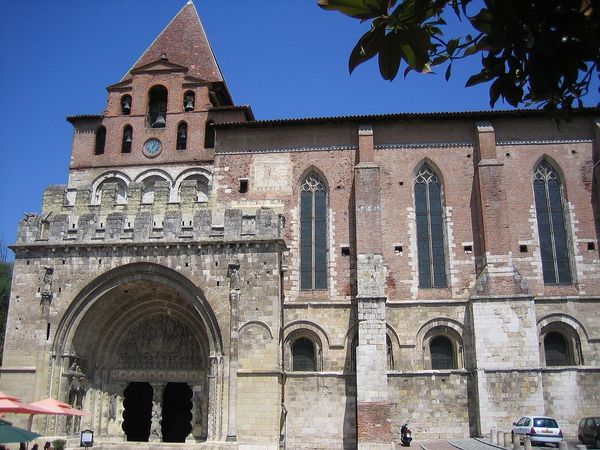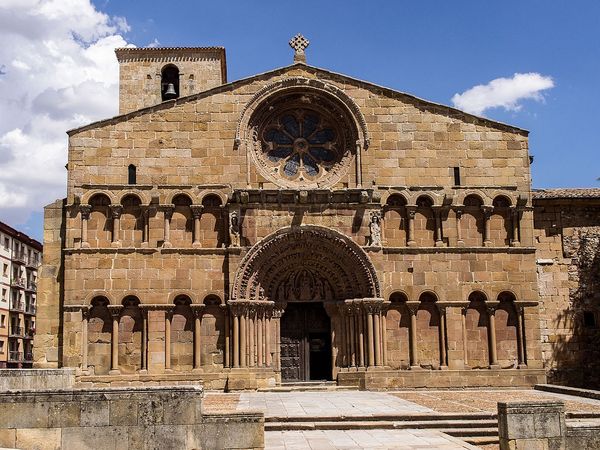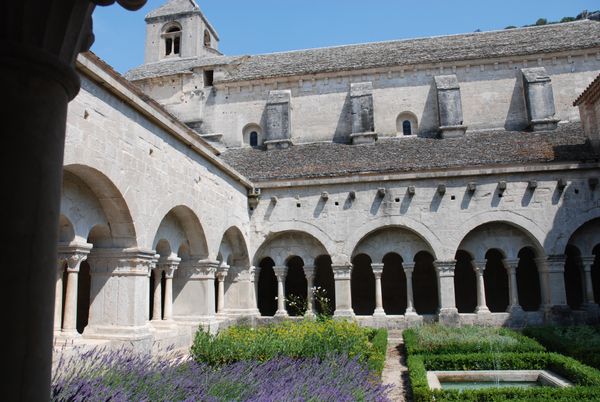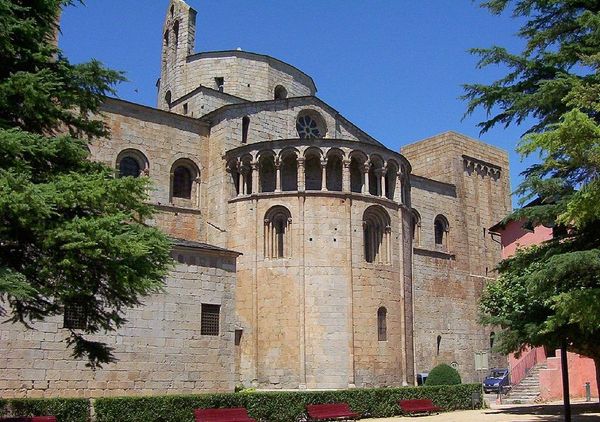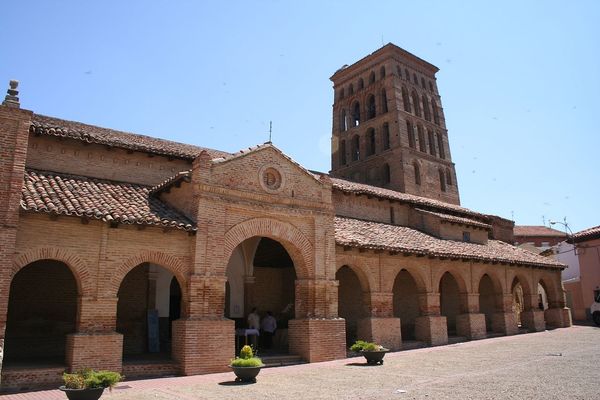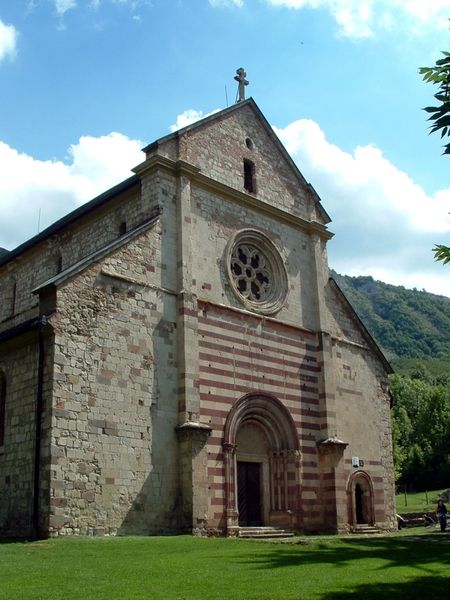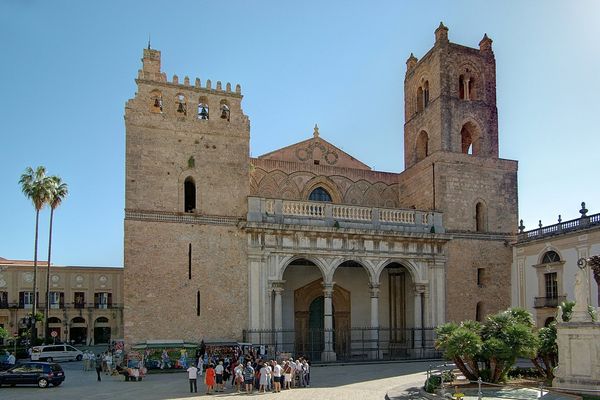
architecture
#
medieval
#
landscape
#
historic architecture
#
romanesque
#
arch
#
architecture
#
historical building
Copyright: Public domain
Curator: Here we have an image of Vézelay Abbey in France, an impressive example of Romanesque architecture dating back to around 1150. What are your first thoughts on this structure? Editor: It has an immediate feel of groundedness, almost defiance, doesn't it? Those thick walls and stout buttresses speak of resilience, of enduring through time, of a deeply anchored spiritual power. Curator: Absolutely. This abbey played a significant role as a starting point for pilgrims on their way to Santiago de Compostela. But it was also significant in consolidating political control in medieval France by housing relics thought to belong to Mary Magdalene, thus drawing more Christians to that region of the country. Editor: Ah, the Magdalen! A complex figure whose symbolism intertwines love, penance, and sacred knowledge. This association would imbue Vézelay with incredible cultural weight. You can almost feel it radiating from the stonework, all those layers of stories etched into the facade. Curator: Yes, and we need to also remember its complex architectural history of repeated additions and renovations, each marking changes in monastic life, religious reform, and dynastic needs. Editor: Look at the play of light and shadow on those arches. The builders knew how to use the Romanesque vocabulary of rounded forms and repetitive shapes to communicate power, solidity, safety. I wonder about the hidden narratives embedded in those carefully carved portals? Curator: Sadly, much of the sculptural detail from this period is not there or legible today. But we still see, don’t we, a structure designed to impress both earthly and heavenly audiences through visual devices but, as I point out, within a highly politicized environment. Editor: Indeed. Vézelay seems less a static building and more a palimpsest of belief, a canvas on which generations have inscribed their hopes, fears, and devotion, through faith. It makes you think about the powerful continuity of human longing for something greater than ourselves. Curator: Ultimately, seeing this image reminds me how deeply rooted our cultural institutions are in sometimes conflicted socio-political landscapes, even as that original history gets subsumed by legend. Editor: And for me, the endurance of places like Vézelay hints that these symbolic centers meet needs beyond the temporal: a continuous human longing for a home and an answer.
Comments
No comments
Be the first to comment and join the conversation on the ultimate creative platform.
